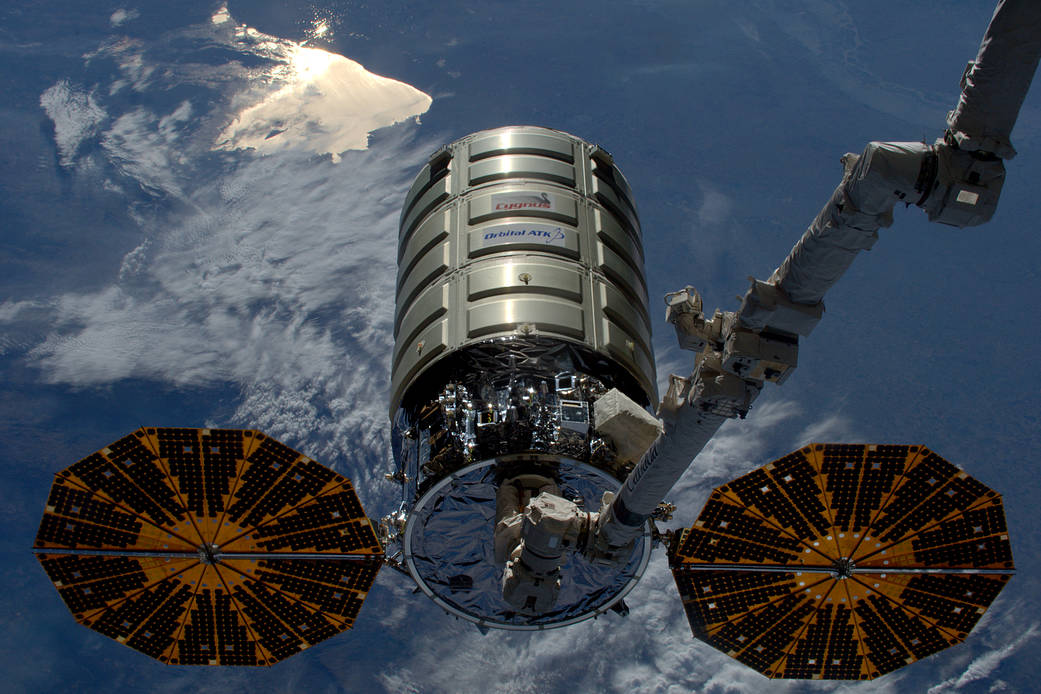
Orbital ATK’s Cygnus cargo craft is released by the International Space Station’s Canadarm2 robotic arm in this photograph by European Space Agency astronaut Tim Peake, who wrote: “We just said goodbye to #Cygnus OA-6 – a great spacecraft & thanks to everyone involved.” Cygnus departed at 9:30 a.m. EDT on June 14, 2016, while the space station was flying above Paraguay.
Aboard Cygnus is the Spacecraft Fire Experiment-1 (Saffire-1), the first of a three-part experiment that will be conducted over the course of three flights to investigate large-scale flame spread and material flammability limits in long duration microgravity.
At 3:30 p.m., once the cargo craft reached a safe distance from the space station, ground controllers at NASA’s Glenn Research Center in Cleveland, Ohio initiated the sequence for Saffire-1. Controllers at Orbital ATK in Dulles, Virginia, activated the experiment at 4:55 p.m. Telemetry indicated the cotton-fiberglass material blend is now burning successfully. Cygnus will continue to orbit Earth for up to eight days as it transmits hi-resolution imagery and data from the Saffire experiment. Following complete data transmission, the Cygnus spacecraft will complete its destructive entry into the Earth’s atmosphere on June 22.
Image Credit: ESA/NASA

























